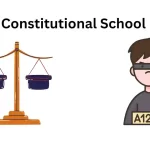Since its inception, competition law in India has undergone a sea of change. Recent years have seen a spurt in the number of cases being filed under the Competition Act, 2002. This Act is a welcome development as it seeks to promote fair competition in the market and protect the interests of consumers.
The history of competition law in India
Competition law in India has a relatively short history. The first competition law, the Monopolies and Restrictive Trade Practices Act, was enacted in 1969. This law was modeled after the United Kingdom’s Restrictive Trade Practices Act of 1956.
The Monopolies and Restrictive Trade Practices Act prohibits monopolistic and other restrictive trade practices. However, it did not establish any regulatory agency to enforce the law. The act was amended in 1977 to establish the Monopolies and Restrictive Trade Practices Commission (MRTPC).
The MRTPC was given investigative and adjudicatory powers. It could investigate cases on its own initiative or on a complaint filed by an aggrieved party. The MRTPC could order companies to cease and desist from anticompetitive practices, impose fines, or even dissolve companies in extreme cases.
The MRTPC was replaced by the Competition Commission of India (CCI) in 2003. The CCI is modeled after the European Commission’s Directorate-General for Competition. It is a statutory body that is empowered to enforce the Competition Act, 2002.
The CCI has been given broad powers to prevent anti-competitive practices. It can investigate companies suo motu.
The different types of competition law in India
Since the economic liberalization of the early 1990s, India has seen a dramatic transformation in its competitive landscape. The country has moved from a highly controlled economy to one that is increasingly market-based and open to foreign competition. This has been accompanied by a gradual evolution in Indian competition law, which is now much more aligned with international norms and standards.
There are two main types of competition law in India
- Monopolies and Restrictive Trade Practices Act (MRTP Act)
- Competition Act
The MRTP Act was enacted in 1969 and is designed to prevent the formation of monopolies and curb restrictive trade practices. The Competition Act was enacted in 2002 and is modeled on the European Union’s competition law regime. It establishes a Competition Commission of India (CCI) with broad powers to investigate and penalize anticompetitive conduct.
In recent years, there have been a number of high-profile cases brought under both the MRTP Act and the Competition Act. These cases have involved allegations of anticompetitive behavior such as price fixing, bid rigging, and market allocation. Some of the most notable cases include those against Google, Facebook, and Flipkart.
The enforcement of competition law in India
The benefits of competition law in India
Since the early 1990s, India has been a leader in promoting competition law and policy. In 1991, the government enacted the Monopolies and Restrictive Trade Practices (MRTP) Act to address anti-competitive practices. The MRTP Act was replaced by the Competition Act in 2002, which strengthened enforcement of competition rules and provided for greater penalties for violations.
Competition law in India has evolved significantly over the past two decades. The most recent development is the amendment to the Competition Act in 2009, which introduced a new provision on cartelization. This amendment was a response to growing concerns about collusion among firms in India, which was seen as having a negative impact on competition and consumers.
The benefits of competition law in India are many. First, it promotes economic efficiency by ensuring that firms compete on the basis of price and quality rather than through anti-competitive practices such as cartels or other forms of collusion. Second, it protects consumers by preventing firms from engaging in unfair business practices such as false advertising or price gouging.
Third, it helps to create jobs and growth by encouraging innovation and investment in new businesses. Finally, competition law promotes good governance by discouraging corruption and ensuring that businesses operate transparently.
The challenges of competition law in India
Since the inception of the Competition Act, 2002, competition law in India has undergone a significant evolution. The Act was amended in 2009 and again in 2013 to further strengthen the competition regime in India. The Competition Commission of India (CCI) has also been very proactive in promoting competition and protecting consumer interests.
However, competition law in India still faces some challenges. One major challenge is the lack of awareness about the Act and its provisions among businesses, especially small and medium enterprises. This results in businesses not being able to take full advantage of the benefits of competition and sometimes even violating the provisions of the Act.
Another challenge is that the CCI does not have adequate powers to effectively enforce competition law in India. For instance, it cannot impose financial penalties on companies found to be violating the Act. This limits its ability to deter anti-competitive behaviour.
The government is aware of these challenges and has taken steps to address them. For instance, it has set up a National Academy for Competition Policy and Law to create awareness about the Act and its implications for businesses. It has also been proposed to give the CCI more powers, including the power to impose financial penalties, in order to make it more effective.
With this
The future of competition law in India
The future of competition law in India is looking bright. The government is committed to ensuring that the competition law regime is strong and effective and has been taking steps to ensure this.
One of the key areas where the government has been focusing its attention is cartelization. Cartels are agreements between companies to fix prices, divide markets, or restrict production, and are considered to be one of the most serious antitrust violations. The government has been working on strengthening the penal provisions relating to cartels and has also set up a special investigation team to investigate and prosecute cartel cases.
Another area where the government is looking to strengthen competition laws is in relation to mergers and acquisitions. The government is looking at amending the merger control regulations to make them more stringent and effective.
Overall, it seems that the future of competition law in India is looking very positive. The government is taking active steps to ensure that the competition regime is strong and effective, and this can only be good news for businesses operating in India.
How many types of trade practices are there in India?
There Are Two types of competition acts in India are:
1. Monopolies and Restrictive Trade Practices Act(MRTP)
2. Competition Law Act






